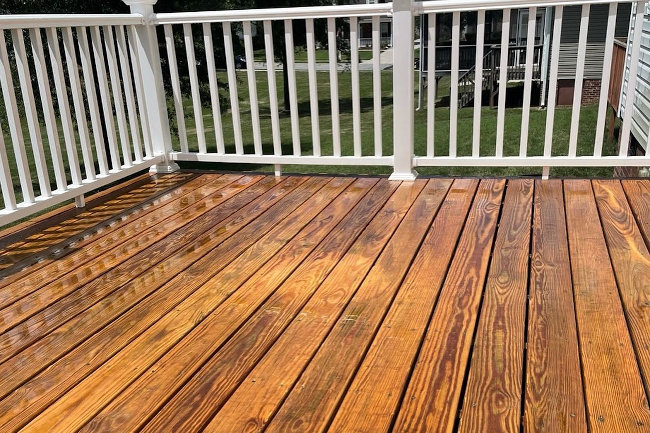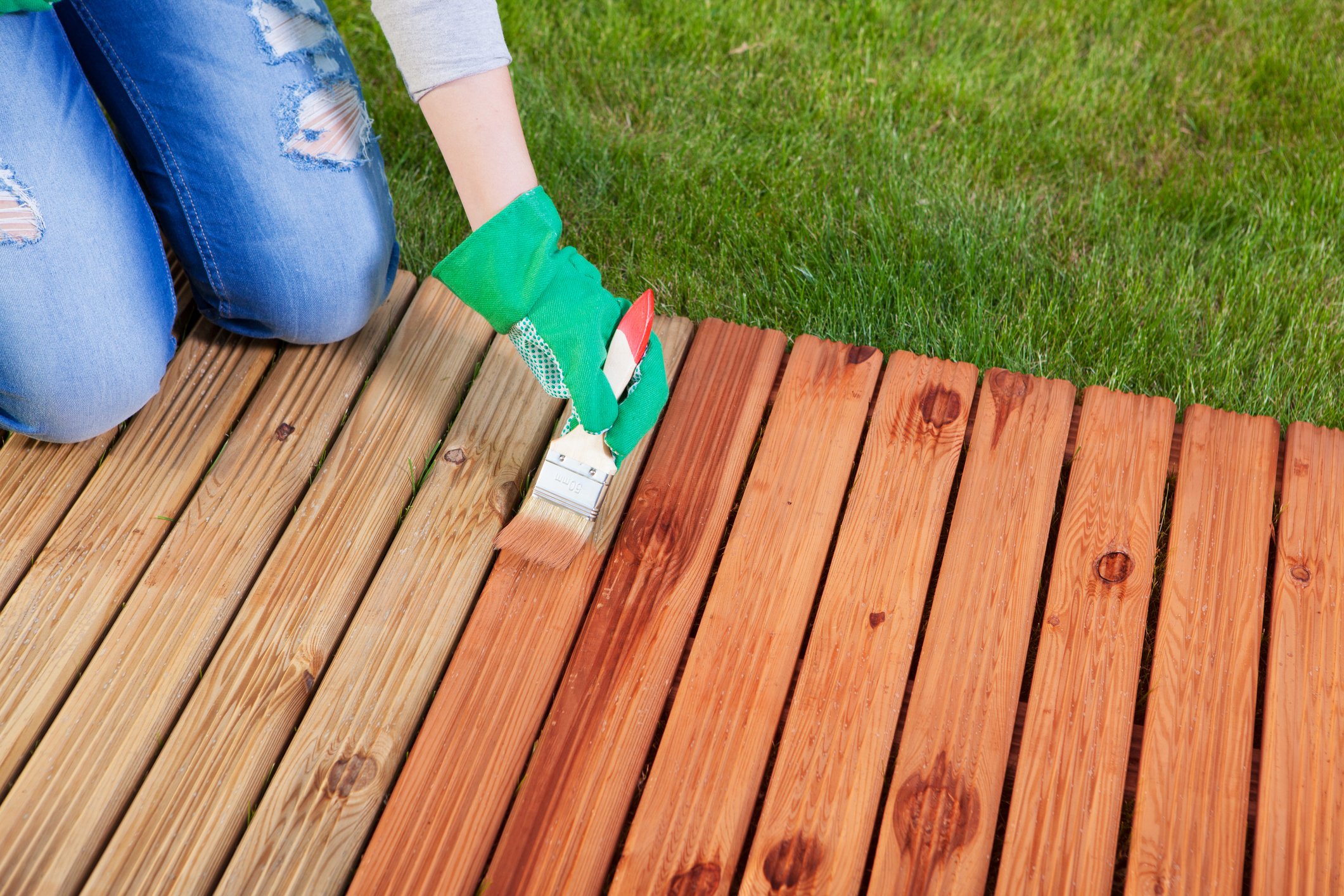Water-Based Stains for a Beautiful Deck: Eco-Friendly and Effective
Water-Based Stains for a Beautiful Deck: Eco-Friendly and Effective
Blog Article
A Comprehensive Guide to Different Kinds Of Deck Staining Techniques for Ultimate Security and Appearances
In the realm of deck upkeep, the art of tarnishing stands as an essential step towards both protecting the stability of your exterior room and enhancing its aesthetic charm. As we navigate via the intricate world of deck staining strategies, one begins to value the nuanced techniques that can make all the difference in between an average finish and a perfect one. From the choice of the suitable discolor type to the careful application techniques, each aspect plays a crucial role in accomplishing that ideal equilibrium in between defense and aesthetic appeals. Join us as we uncover the secrets behind achieving the ultimate deck staining results-- a journey where every brushstroke shapes not simply the surface, but the very essence of your outside shelter.
Understanding Different Sorts Of Spots
Different kinds of discolorations are generally utilized in the procedure of deck staining to attain different visual and safety impacts. On the various other hand, semi-transparent spots offer a balance between color enhancement and security, enabling some wood grain to reveal with.
Toners add a tip of shade to the wood while offering very little protection, making them appropriate for more recent decks with less wear. Comprehending the attributes and advantages of each type of tarnish is vital for attaining the preferred look and resilience for your deck.
Selecting the Right Stain Color
When thinking about the visual appeals of your deck discoloration task, the selection of stain color plays a crucial function in enhancing the protective top qualities of the chosen stain type (Right Deck Stain). The shade you choose can dramatically affect the total appearance of your deck, along with its capacity to stand up to the components in time
When choosing a stain color, it's vital to take into consideration the existing color design of your home's exterior. Balancing the deck tarnish with the total aesthetic of your residential property can produce a cohesive and visually attractive exterior space. Furthermore, the color of your deck tarnish can influence the temperature level of the deck surface; darker shades tend to soak up even more heat, while lighter shades mirror sunlight and stay cooler.
Moreover, the sort of wood you are tarnishing will also influence just how the tarnish shade shows up. Various timber species can connect with the discolor in different methods, possibly changing the final color. It's recommended to test the stain on a small, inconspicuous location of the deck to ensure the color turns out as desired prior to waging the entire task.
Preparing Your Deck for Staining
To make sure a long-lasting and successful deck discoloration job, complete prep work of the deck surface is crucial. Begin by cleaning up the deck thoroughly to remove dirt, grime, mold, and any type of old complete or stain. Make use of a deck cleaner or a combination of water and cleaning agent along with a tight brush or stress washing machine to scrub the surface area tidy. After cleaning, enable the deck to dry totally prior to moving on to the following action.
Inspect the deck for any harmed or rotten boards that need to be replaced. Hammer down any kind of protruding nails and sand any harsh areas to ensure a smooth surface for discoloration. Look for any type of loosened barriers or steps that might require tightening up or repair work.
When the deck is clean, completely dry, and in excellent repair, consider applying a timber brightener to recover the deck's natural shade and open up the timber pores for much better discolor penetration. Lastly, safeguard any type of nearby plants, furniture, or surface areas with plastic sheet before waging the staining procedure. Appropriate preparation is essential to achieving a professional-looking finish and maximizing the long life of your deck tarnish.
Using Discoloration With Different Techniques
For a perfect and specialist surface, the approach of applying tarnish plays a vital duty in improving the appearance and longevity of your deck. There are several techniques you can make use of to ensure an effective application of stain.
It is optimal for detailed areas and getting to between deck boards. Back-brushing after rolling is recommended to also out the discolor and work it right into the wood for much better infiltration.
Splashing is one more popular strategy, offering rate and convenience of application, specifically for huge deck areas. It is necessary to make use of a high-quality news sprayer and bear in mind overspray. Pad applicators offer a smooth and also finish and are ideal for both straight and vertical surfaces. Whichever technique you choose, guaranteeing correct prep work and adhering to supplier standards will certainly assist achieve a long-lasting and lovely tarnish coating on your deck.

Preserving and Re-staining Your Deck
When it comes to re-staining your deck, the regularity depends on various variables such as the type of stain used, the environment in your location, and how much wear and tear your deck experiences. Usually, it is advised to re-stain your deck every Recommended Site 2-4 years to preserve its protection and aesthetics.
Before re-staining, make sure the deck is tidy, completely dry, and complimentary of any previous stain deposit. Choose a top notch stain that fits your deck's product and supplies the desired degree of defense.
Final Thought
In conclusion, comprehending the various types of deck discolorations, selecting the ideal shade, effectively preparing the deck, applying stain with numerous strategies, and keeping and re-staining the deck are essential steps for utmost defense and aesthetics. By adhering to these actions, you can ensure that your deck continues to be in leading condition for several years ahead.
Additionally, the shade of your deck stain can influence the temperature of the deck surface; darker shades often tend to absorb more warmth, while lighter shades show sunlight and stay cooler.
It's suggested to test the stain on a small, unnoticeable location of the deck to make certain the shade turns out as desired before proceeding with the entire job.

Report this page